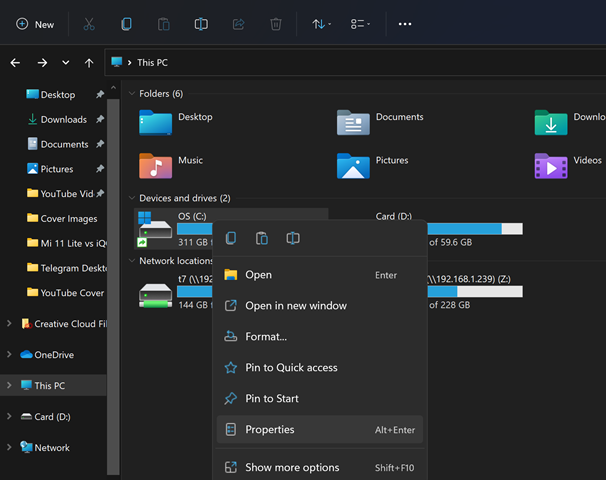

This might seem odd, but it allows the operating system to start up quickly by entering Hibernation mode rather than completely shutting down. Windows 11 and Windows 10 are automatically configured to save anything in memory to its C: drive by default. Keep an eye on the Recycle bin and the Downloads folder as well, and remove files from them regularly.The rest of the process is the same as outlined above: Disk Cleanup will ask you to confirm that you want to delete the selected files, open a new window displaying its progress, then automatically close itself when it’s done going over your drive with a… bristle brush? How to disable Hibernation on Windows 11 Keeping enough free disk space on the drive is a bit hard but not impossible. Unfortunately, SSDs are expensive and come in smaller configurations than hard drives. Windows 10 systems are now coming with SSDs configured, and in order to get the full benefit of the SSD, the OS has to be installed on it. Once the app has been removed, the Windows10Upgrade folder will be deleted.Look for and select the Windows 10 Update Assistant app.Once the folder has been backed up, you can delete Windows.old.Īnother smaller folder that is created when you install a major Windows 10 update is the Window10Upgrade folder.Copy it to an external drive and provide admin rights whenever the file copy dialog asks for it.

The Windows.old folder will be at the root of the drive.Open File Explorer and go to the C Drive (or whichever is your Windows drive).Sign into Windows 10 with an admin account.If you need to free the space up right away, you can delete the folder or move it to an external drive. It’s there in case you want to roll back the update. The folder will automatically be deleted after ten days. Make sure Windows update files are selected and then run disk clean up to free up space.Ī major Windows 10 update, i.e., a feature update, will create a Windows.old folder and it’s going to be massive.The Disk Cleanup tool will check for files that can be cleaned up.On the General tab, select Disk Cleanup.Right-click the Windows Drive and select Properties.Windows 10 has a disk clean-up tool that can get rid of a lot of junk files that you do not need, and it works great with residual files that are left after a major Windows 10 update. The only problem is that Windows 10 won’t clean up the unnecessary files once the installation has been successful. It’s more noticeable when you have a feature update that’s been installed. Free up disk space after Windows 10 updateĮvery Windows update, whether it’s big or small, takes up space on the disk.


 0 kommentar(er)
0 kommentar(er)
